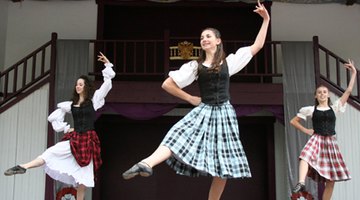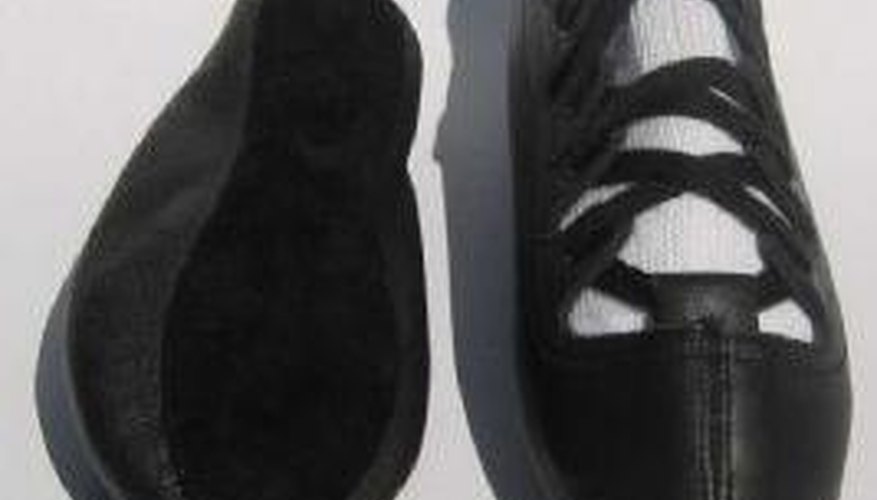Shoes called gillies are worn by women for traditional Scottish dancing. They are low cut slippers similar to ballet slippers but with added laces that give them their signature look. The open areas of the shoe let the specially-woven "poodle socks" peep through and thus draw attention to the dancers' feet as they leap through complex patterns. While many dancers tie the laces around the arch of the foot, shoemaker and dancer Craig Coussins recommends an alternate tying method that does not risk damaging the arch.
Thread the laces through the bottom set of eyelets and lace as you would a sneaker, crossing the laces over to form an "X" between each pair of eyelets until you reach the top of the shoe. Tighten the laces so that there is no slack or big loop between eyelets.
- Shoes called gillies are worn by women for traditional Scottish dancing.
- Thread the laces through the bottom set of eyelets and lace as you would a sneaker, crossing the laces over to form an "X" between each pair of eyelets until you reach the top of the shoe.
Cross the laces in front of the ankle.
Thread the laces through the second eyelet on the side of the shoe on both sides.

Thread the laces through the back loop on the heel of the shoe. Hold the laces together and pull them upward to make the shoe snug.
- Thread the laces through the second eyelet on the side of the shoe on both sides.
- Thread the laces through the back loop on the heel of the shoe.
Thread the laces through the first eyelets on the side of the shoe. The lace will go out through the eyelet from the inside of the shoe.
Pull the laces tight, creating a sung fit around the heel and arch. Tie the laces in a knot on the front or side and tuck the laces in where they won't rub your foot when you dance.
TIP
Buy Scottish dance shoes from a professional fitter to ensure a good fit.
